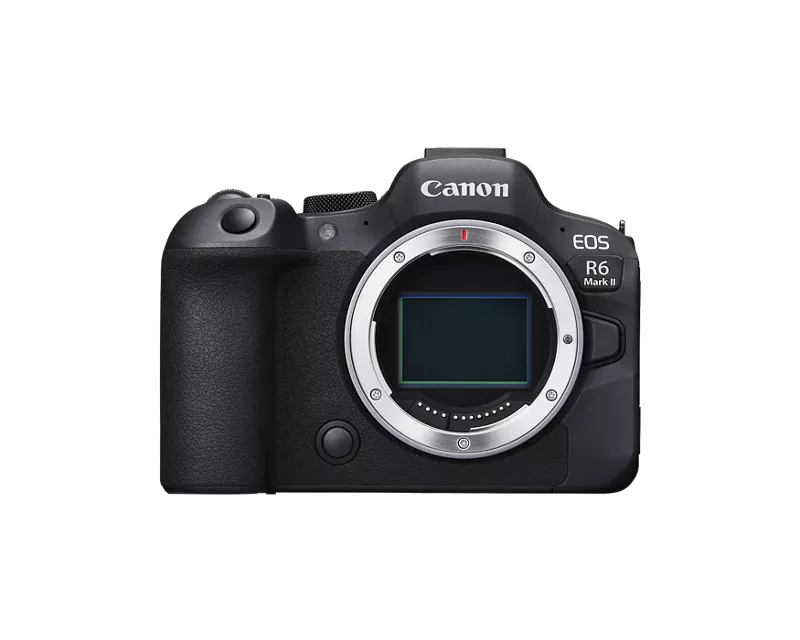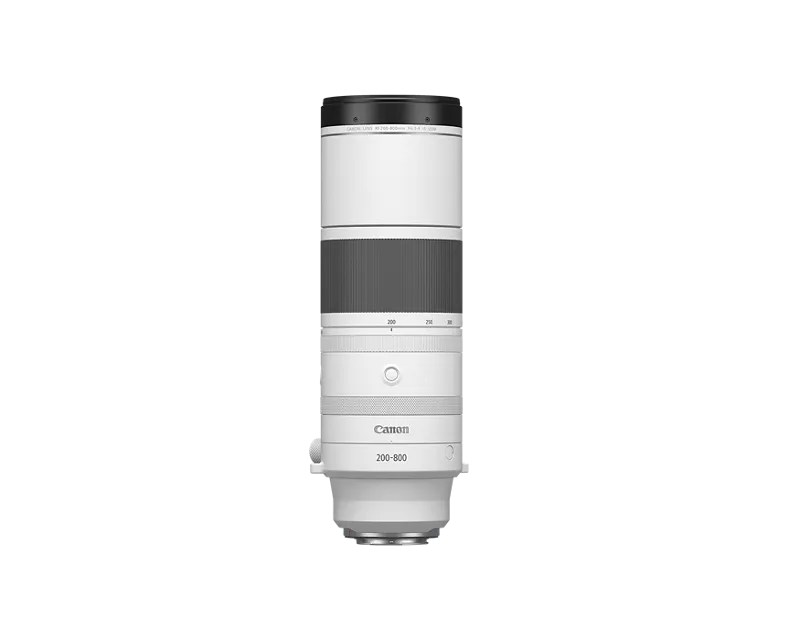- Meet Our Illuminaries
- Discussions & Help
- Gallery
- Learn With Canon
- About Our Community
- Meet Our Illuminaries
- Discussions & Help
- Gallery
- Learn With Canon
- About Our Community
- Canon Community
- Discussions & Help
- Camera
- EOS DSLR & Mirrorless Cameras
- EOS R8 recommended settings for consistent ID badg...
- Subscribe to RSS Feed
- Mark Topic as New
- Mark Topic as Read
- Float this Topic for Current User
- Bookmark
- Subscribe
- Mute
- Printer Friendly Page
EOS R8 recommended settings for consistent ID badge photos
- Mark as New
- Bookmark
- Subscribe
- Mute
- Subscribe to RSS Feed
- Permalink
- Report Inappropriate Content
01-06-2025
03:14 PM
- last edited on
01-07-2025
10:16 AM
by
Danny
Hello! I do new employee badge portraits for the medical company I work with, and try for all the photos to be consistent, since it's a rather broad company.
The background we started using recently is a light grey, and since this change the background color of a lot of the photos has been inconsistent; sometimes it's starkly white, sometimes it's blue-grey, and sometimes it's accurate to the actual color. The company I work with is set and comfortable with the grey background, so it's up to be to ensure that the photos are consistent.
For some environmental/settings context: We take new employee photos in a room with fluorescent lights and three floor-to-ceiling windows, which we keep shaded for orientation slideshows. I use a Canon T7 Rebel, and usually shoot on CA. I don't like to take photos with flash (that way glasses and jewelry aren't over-illuminated). The centering of the photos is great, and I'm not having any trouble with red eyes or with blurriness.
Does anyone have any suggestions for making sure that both the grey background and the people being photographed aren't washed out, underlit, or inconsistent each time?
- Mark as New
- Bookmark
- Subscribe
- Mute
- Subscribe to RSS Feed
- Permalink
- Report Inappropriate Content
01-06-2025 05:54 PM
You can use most any image editor to remove the background and replace it with anything you want.
"Enjoying photography since 1972."
- Mark as New
- Bookmark
- Subscribe
- Mute
- Subscribe to RSS Feed
- Permalink
- Report Inappropriate Content
01-06-2025 06:56 PM
Are you getting a flicker warning?
I would get some real photo LED light panels for consistency.
- Mark as New
- Bookmark
- Subscribe
- Mute
- Subscribe to RSS Feed
- Permalink
- Report Inappropriate Content
01-07-2025 11:47 AM
jameseyboy,
I would spot meter off their face too.
Steve Thomas
- Mark as New
- Bookmark
- Subscribe
- Mute
- Subscribe to RSS Feed
- Permalink
- Report Inappropriate Content
01-07-2025 05:57 PM - edited 01-07-2025 06:04 PM
Hi and welcome to the forum:
I did a similar exercise with some university faculty members. They wanted head and shoulders shots for their site and for their publications. Like you, I favoured a grey background and found one with as close to the 18% reflectance that the camera sensor needs to have. I chose to shoot in available light that came through large windows that faced south (in the southern hemisphere that offers indirect light), thus providing a soft light to reduce sharp shadows.
You would suggest that you don't want to mix lighting types and I prefer the natural light as it will not be high above them and thus produce deeper shadows for eyes and neck. In that case I will likely shoot in Auto lighting mode, but you could switch to natural or one of the others to lock that in - depends on your specific light.



Camera setup.
Metering in spot mode, centred. This allows you to specify a specific location for your metering. Once you have a setting you can shoot in M mode and forget it, or shoot in Av mode and meter off the same spot on background - that should give you a consistent level of exposure as the background remains constant in its reflectance value.
You want the subject to be a couple of metres off the background to make sure there are no shadows cast on the wall behind, this also allows you to let the wall dissolve to out of focus. You don't mention what lens you use, but I prefer to shoot with a mild to moderate telephoto lens - in a range around 80-150mm, and with a f/stop of around f/5.6 - 8.
Since getting focus on the eye is everything, I shoot with centre point spot focus and I use back-button focus to be able to separate focus from the shutter actuation. To set up BBF see this video from Canon: note you need to set up servo focus as part of this to allow you to track someone if they are moving - you TAP the AF-ON button for a static shot and HOLD the AF-On button to track.
Master Back-Button Focus | How to Back-Button Focus on your Canon Camera - YouTube
By using centred spot focus I am able to zero precisely in on the closest eye (if they choose to be at an angle) and the camera is not confused by things like glasses etc. If you are shooting people with glasses, consider a circular polarizing filter to remove reflections, but note you will lose a stop or so of light in doing so, so consider shooting in Av mode as an alternative to M.
The sequence of events is this:
1. Point the centre of the display at the grey background and get your exposure set. Either set it in M mode, or M.
2. press the * button that should be set to exposure lock.
3. Point to the subject's eye and lock the focus on that
4. Recompose and press the shutter button to take the shot.
It takes more time to explain that to execute. With practice you become extremely fast at the technique. For these images, each person took me about 3 minutes to get them positioned, comfortable (some folks get really stressed at having a photo taken) and take several shots. I usually take one each of face turned 30-45deg to each side, and one face directly on.
I hope this is of some assistance to you.
cheers, TREVOR
The mark of good photographer is less what they hold in their hand, it's more what they hold in their head;
"All the variety, all the charm, all the beauty of life is made up of light and shadow", Leo Tolstoy;
"Skill in photography is acquired by practice and not by purchase" Percy W. Harris
- Mark as New
- Bookmark
- Subscribe
- Mute
- Subscribe to RSS Feed
- Permalink
- Report Inappropriate Content
01-08-2025 02:40 PM
In my former company we took a lot of ID photos with over 1000 employees and hiring more, and new contractors continually. We used a gray backgound, we actually had a couple made up that were on frames and portable so we could take them in different locations. We did not use any locations where natural light came through windows, mostly indoor led lighting in all locations, and always used auto white balance. We never had any problems with the background. I'm guessing the windows are messing with your white balance since that light changes continually and is a different color temperature from your fluorescent lighting. I think if you get into a room with no windows you will be fine.
- Mark as New
- Bookmark
- Subscribe
- Mute
- Subscribe to RSS Feed
- Permalink
- Report Inappropriate Content
01-09-2025 11:51 AM - edited 01-09-2025 11:53 AM
This is relatively easy. You can buy a stand and background paper on rolls. You need to put tape or a spot or way to keep placement the same on the floor for the stand, the person, and the camera so each time everything is the same. This stuff can be removed and put away until it is needed next time. You need a post editor like DPP4 free from Canon to d/l. (or Photoshop or Lightroom)
Use raw, not jpg, and forget any WB as you can balance that and color balance out in DPP4 so it is exactly the same for all photos no matter how or when they were shot. In Canon's DPP4 navigate to the "White Balance" settings, where you will find a slider labeled "Color Temperature (K)". It allows you to input a specific Kelvin value to precisely adjust the color temperature, WB, of your image based on the lighting conditions you were shooting in that day or time.
EOS 1D, EOS 1D MK IIn, EOS 1D MK III, EOS 1Ds MK III, EOS 1D MK IV and EOS 1DX and many lenses.
11/20/2025: New firmware updates are available.
EOS R6 Mark III - Version 1.0.1
EOS R5 Mark II - Version 1.2.0
PowerShot G7 X Mark III - Version 1.4.0
PowerShot SX740 HS - Version 1.0.2
10/21/2025: Service Notice: To Users of the Compact Digital Camera PowerShot V1
10/15/2025: New firmware updates are available.
Speedlite EL-5 - Version 1.2.0
Speedlite EL-1 - Version 1.1.0
Speedlite Transmitter ST-E10 - Version 1.2.0
07/28/2025: Notice of Free Repair Service for the Mirrorless Camera EOS R50 (Black)
07/24/2025: New firmware updates are available.
07/23/2025: New firmware updates are available.
7/17/2025: New firmware updates are available.
05/21/2025: New firmware update available for EOS C500 Mark II - Version 1.1.5.1
02/20/2025: New firmware updates are available.
RF70-200mm F2.8 L IS USM Z - Version 1.0.6
RF24-105mm F2.8 L IS USM Z - Version 1.0.9
RF100-300mm F2.8 L IS USM - Version 1.0.8
RF50mm F1.4 L VCM - Version 1.0.2
RF24mm F1.4 L VCM - Version 1.0.3
01/22/2024: Canon Supports Disaster Relief Efforts in California
01/14/2025: Steps to resolve still image problem when using certain SanDisk SD cards with the Canon EOS R5 Mark II
- Canon LPE-19 battery lifespan in Camera Accessories
- JPEG chroma subsampling in Camera Software
- EOS 90D C1 and C2 settings recommendations in EOS DSLR & Mirrorless Cameras
- EOS 5D Mark IV Recommended settings for Ice Hockey in EOS DSLR & Mirrorless Cameras
- EOS R6 Mark II Recommended settings for roller derby in EOS DSLR & Mirrorless Cameras
Canon U.S.A Inc. All Rights Reserved. Reproduction in whole or part without permission is prohibited.




